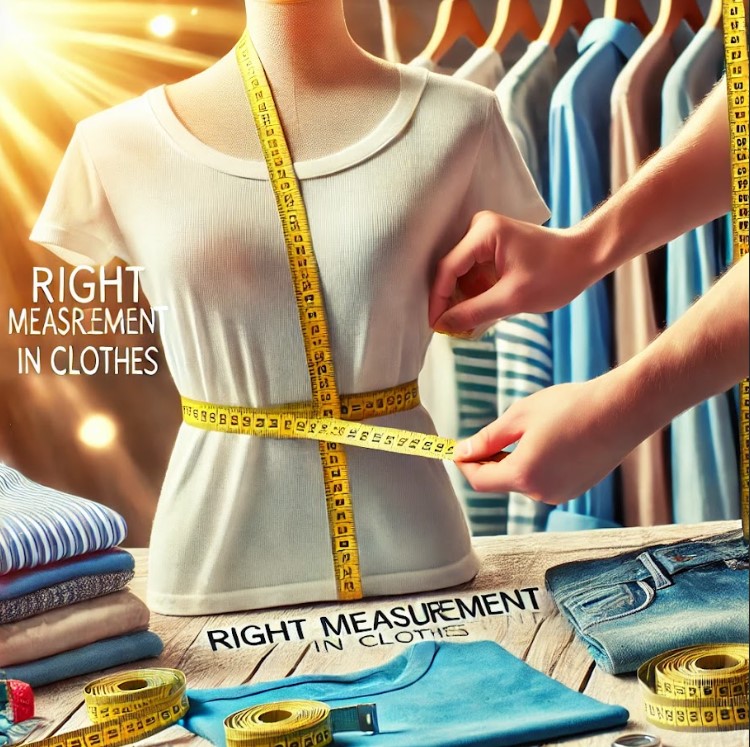Perfect Fit: The Key to Timeless Style
Finding the perfect size to ensure comfort and style in clothing is important. Accurate measurements play a crucial role in achieving this, ensuring that garments flatter your body shape and allow for ease of movement. Ill-fitting clothes can lead to discomfort and a lack of confidence, impacting how you present yourself to the world. Understanding the significance of accurate measurements and the different elements that affect how clothing fits will help you make well-informed choices when you shop for clothes, whether it’s online or in a physical store. This article explores why taking the time to measure correctly is vital for a wardrobe that enhances your individuality.
Size Matters
- Bust/Chest Measurement: For women, this is measured around the fullest part of the bust; for men, around the chest. It ensures proper fit in shirts, blouses, dresses, and jackets.
- Waist Measurement: Measure the waist at the narrowest part of the torso, usually located just above the belly button. It’s crucial for the fit of pants, skirts, and dresses.
- Hip Measurement: Measurements are typically taken around the widest part of the hips, which can affect how trousers, skirts, and fitted dresses fit around the lower body.
- Inseam Measurement: This is the length from the crotch to the bottom of the leg. It’s essential for the correct length in pants and jeans.
- Sleeve Length: Sleeve length is measured from the shoulder to the wrist. It ensures that sleeves aren’t too short or too long, especially in tailored shirts and jackets.
- Shoulder Width: Measured across the back from one shoulder seam to the other. It ensures a well-fitted upper garment like jackets or blazers.
The Fit Factor
- Enhanced Comfort: Clothes that fit well move naturally with your body, avoiding tightness or restriction. Proper measurements ensure that garments fit comfortably in areas like the waist, shoulders, and hips, which is particularly important for daily wear.
- Improved Appearance: Well-fitted clothing complements your body shape, making you look polished and put together. It can enhance your silhouette, providing a flattering look that boosts your overall style.
- Boost in Confidence: Wearing clothing that fits perfectly can improve your self-confidence. Whether it’s a tailored suit or a fitted dress, properly measured garments can make you feel more secure and comfortable in social and professional settings.
- Better Performance in Sportswear: Precise measurements are critical for athletic clothing. Wearing appropriately sized gear improves performance by enabling unrestricted movement without being too snug or too loose, which can impede mobility.
- Reduced Need for Alterations: Accurate measurements can minimize costly tailoring or returns due to poor fit, saving time and money.
Measure Twice, Style Once
- Measuring Over Clothing: Measuring over thick clothing like sweaters or jackets can add inches, resulting in larger measurements than your actual size. Always measure over light or tight-fitting garments for accuracy.
- Using a Non-Flexible Measuring Tape: Rigid or non-flexible measuring tapes can lead to inaccurate results. Soft, flexible measuring tape is essential for capturing precise measurements that contour your body.
- Not Standing in a Natural Position: Standing awkwardly, holding your breath, or slouching while measuring can distort your body shape and result in incorrect measurements. Always stand naturally and breathe normally when taking measurements.
- Inconsistent Measurement Points: Failing to measure from the correct points (e.g., at the fullest part of the bust or hips or at the natural waist) can lead to poor-fitting garments. Ensure you’re measuring from the exact points relevant to each body part.
- Wrong Measuring Techniques: Wrapping the tape too tightly or too loosely can skew results. The tape should be snug but not tight, allowing for a comfortable fit.
Tech Meets Tailoring
- Digital Measurement Tools: Apps and gadgets now allow users to measure their body dimensions precisely. These tools use smartphones or wearable devices to capture exact measurements by scanning the body or using built-in cameras. This minimizes human mistakes and guarantees more precise outcomes, particularly for online shopping or personalized tailoring.
- 3D Body Scanning: 3D body scanners provide highly detailed and accurate body measurements in seconds. These scanners use lasers or infrared technology to create a precise digital model of the body, capturing measurements from multiple angles. This is widely used in professional tailoring and by some clothing brands to offer personalized fit options.
- Virtual Fitting Rooms: Several internet-based stores currently provide virtual fitting rooms, allowing customers to input their body measurements or utilize augmented reality to visualize how the clothing will look and fit. These virtual fittings help users visualize how garments will look on their bodies, reducing the need for returns and improving the shopping experience.
- AI-Powered Fit Recommendations: Artificial intelligence (AI) analyzes data from previous purchases and measurements to recommend the best size for a customer. AI learns from body shape preferences and uses data-driven insights to suggest clothing that will fit comfortably, reducing the guesswork when selecting sizes.
- Smart Fabrics and Wearable Tech: Emerging technologies like smart fabrics can adapt to a wearer’s body shape or activity level. These fabrics use sensors to measure stretch or tightness, automatically adjusting for a better fit. Wearable tech like belts and smart garments can also track body changes over time, making them ideal for maintaining the right fit.
Final Thoughts
Accurate body measurements are essential for achieving well-fitting clothing that enhances comfort, appearance, and confidence. Understanding key measurements, avoiding common mistakes, and considering the influence of fabric and style are crucial steps in the fitting process. Technology plays a transformative role by providing innovative tools like digital measurement apps, 3D body scanners, and virtual fitting rooms, making it easier than ever to find the right fit. By prioritizing proper measurements and utilizing available technology, individuals can enjoy a wardrobe that looks great and feels comfortable and reflects their personal style.


